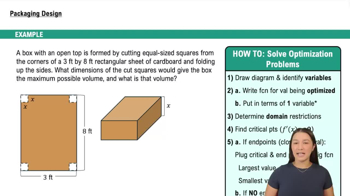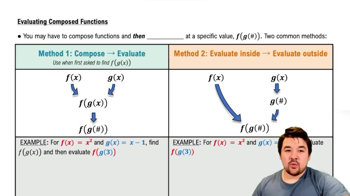27–40. Implicit differentiation Use implicit differentiation to find dy/dx.
√x⁴+y² = 5x+2y³
 Verified step by step guidance
Verified step by step guidance Verified video answer for a similar problem:
Verified video answer for a similar problem:



 5:14m
5:14mMaster Finding The Implicit Derivative with a bite sized video explanation from Patrick
Start learning